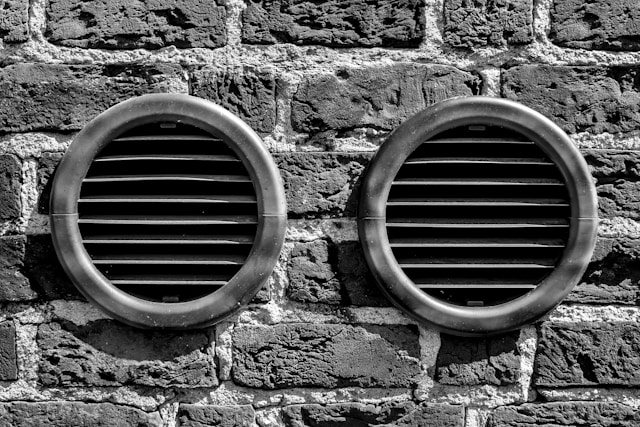The Importance of Air Duct and Vent Cleaning After a Major Water Intrusion Event
September 22, 2025When your property experiences major water intrusion, you’ll need to address hidden moisture in your HVAC system that can breed mold, bacteria, and other harmful contaminants throughout your ductwork. You’re facing serious risks to both indoor air quality and occupant health if your air ducts aren’t professionally cleaned, as contaminated systems will continue circulating pollutants every time your heating or cooling runs. To protect your investment and meet insurance requirements, you’ll want certified technicians using HEPA equipment and following NADCA protocols to thoroughly clean and sanitize your entire duct system.

Why Water Intrusion Poses a Risk to HVAC Systems
When your property experiences water intrusion from floods, leaks, or backups, moisture can become trapped within your HVAC system’s ductwork. You’ll find that damp, dark air ducts create ideal conditions for mold and bacteria to thrive, leading to serious indoor air quality issues. Your HVAC system will then circulate these contaminants throughout your building while potentially developing airflow restrictions from accumulated debris and microbial growth.
Floods, leaks, and backups introduce moisture into ductwork, creating the perfect environment for mold, bacteria, and airflow restrictions
During major water intrusion events like floods, burst pipes, and sewage backups, moisture readily seeps into your HVAC system’s ductwork. Post water damage HVAC cleaning becomes critical as trapped moisture creates ideal conditions for contamination.
- Damp ductwork promotes aggressive mold colonization
- Bacteria thrive in moisture-laden environments
- Debris accumulation restricts proper airflow
- Indoor air quality restoration requires immediate duct contamination water damage treatment
How Contaminated Ducts Affect Indoor Air and Health
When your HVAC system’s ducts remain contaminated after water damage, they’ll continuously circulate harmful particles like mold spores and allergens throughout your home or business. You’ll notice worsening indoor air quality as these contaminants spread through every room each time your system runs. Your family or employees may experience respiratory issues, allergic reactions, and persistent musty odors until the ductwork receives proper professional cleaning.
Unclean ducts circulate allergens, mold spores, and foul odors throughout living spaces, affecting air quality and respiratory health
Inside tainted air ducts, moisture from water damage creates the ideal breeding environment for mold, bacteria, and other harmful microorganisms. When your HVAC system operates, it’s dispersing these pollutants throughout your home. Air duct cleaning after flood damage is essential, adhering to IICRC S520 HVAC guidelines to safeguard your health.
- Hazardous mold spores populate moist ductwork within 24-48 hours
- Polluted air circulates 5-7 times daily throughout your home
- Mold in ductwork initiates allergies and respiratory complications
- Expert cleaning prevents inter-room contamination
Preventing Mold Growth and Mechanical Damage
When you clean your air ducts after water damage, you’re not just stopping mold – you’re protecting essential HVAC components from deterioration. Moisture trapped in ductwork creates the perfect environment for microbial growth that can corrode blower motors and cooling coils over time. Professional cleaning removes both visible contamination and microscopic spores that would otherwise continue damaging your system’s mechanical parts.
Professional duct cleaning removes microbial buildup and helps preserve blower motors, coils, and other HVAC components from corrosion
Through professional duct cleaning, your HVAC system gains crucial protection against the damaging effects of microbial growth and moisture accumulation. NADCA certified duct cleaning technicians use specialized equipment to protect important components while removing harmful buildup.
- Hepa air scrubbers flood cleanup prevents cross-contamination
- Air duct sanitation after leaks stops corrosion of metal surfaces
- Professional cleaning preserves blower motor functionality
- Regular maintenance extends equipment lifespan and efficiency
Industry Standards and Insurance Compliance Factors
You’ll need to confirm your post-flood duct cleaning meets established NADCA and IICRC industry standards to properly restore your HVAC system. Your insurance provider may require professional duct cleaning documentation as part of the claims process for water damage restoration. Working with certified technicians who follow these recognized protocols will help validate your insurance claim while confirming your system is properly cleaned and sanitized.
Organizations like NADCA and IICRC provide guidelines for post-flood duct cleaning, and many insurers require HVAC servicing to validate claims
Following established industry standards is crucial when cleaning air ducts after water damage. Your insurance provider will likely require professional flooded HVAC system cleanup that meets NADCA and IICRC protocols to validate claims.
- Documentation of antimicrobial duct treatment
- Before and after inspection photos
- Detailed water damage insurance ductwork reports
- Certified technician verification of completed work
Professional certifications and adherence to these standards guarantee thorough restoration and safeguard your insurance coverage.
Best Practices for Property Owners After Water Damage
After experiencing water damage, you’ll need to have your HVAC system professionally inspected before attempting to run it again. You should refrain from operating your heating and cooling systems until a certified technician confirms they’re safe to use, as premature operation can spread contaminants throughout your home. To guarantee long-term protection against mold and bacteria, request antimicrobial treatment as part of your duct cleaning service.
Homeowners should schedule HVAC inspections, avoid running systems prematurely, and request antimicrobial treatment to prevent mold regrowth.
In the aftermath of water damage, safeguarding your HVAC system requires three crucial steps. First, arrange a professional inspection before reactivating your system. Second, request thorough vent cleaning after water intrusion by a certified Southfield water damage company. Third, guarantee antimicrobial treatment for odor removal in HVAC ducts.
- Record all observable moisture damage
- Test humidity levels in ductwork
- Confirm completion of antimicrobial fogging
- Obtain clearance report before system restart
